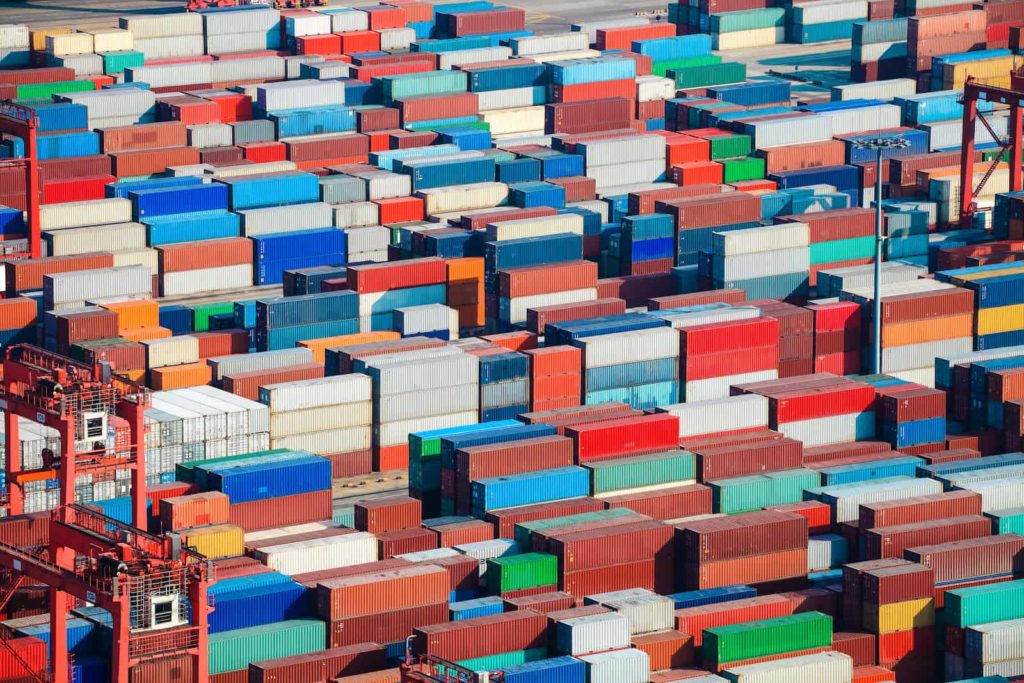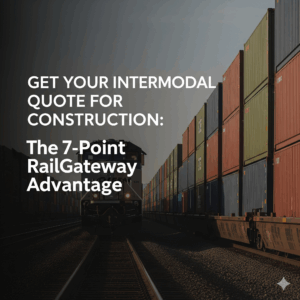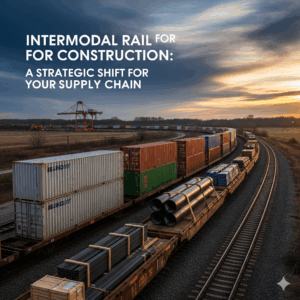This blog post was last updated on May 22nd, 2025
Intermodal transportation is revolutionizing how goods move across the world – and in 2025, its impact is more evident than ever. As global supply chains face pressure to become faster, greener, and more cost-efficient, intermodal transportation emerges as one of the smartest strategies for shipping success. By combining multiple modes of transport – typically rail, truck, and sometimes ocean – without handling the freight itself during mode changes, this method offers both flexibility and reliability.
The brilliance of intermodal transportation lies in its ability to take advantage of each mode’s strength. Rail is cost-effective and fuel-efficient for long distances, trucks provide door-to-door convenience, and ocean freight ensures international reach. With logistics demands increasing, shippers who embrace intermodal solutions are positioned to scale while maintaining cost control and reducing delays.
Environmental concerns are also pushing more companies toward intermodal transportation. Rail transport emits significantly fewer greenhouse gases than long-haul trucks. As sustainability becomes a competitive edge – and in some cases, a regulatory requirement – this mode of shipping enables companies to meet both economic and ecological goals.
What’s more, innovations in tracking, automation, and cargo security have made intermodal transportation more seamless than ever. Gone are the days of worrying about lost containers or miscommunication between providers. Today’s intermodal logistics are tightly integrated, offering real-time visibility and minimized risk of cargo damage, theft, or claims.
In this blog post, we’ll break down the seven most powerful reasons why intermodal transportation is one of the best shipping solutions available today. From cost savings to supply chain resilience, discover how this modern freight solution can elevate your business strategy in 2025 and beyond.
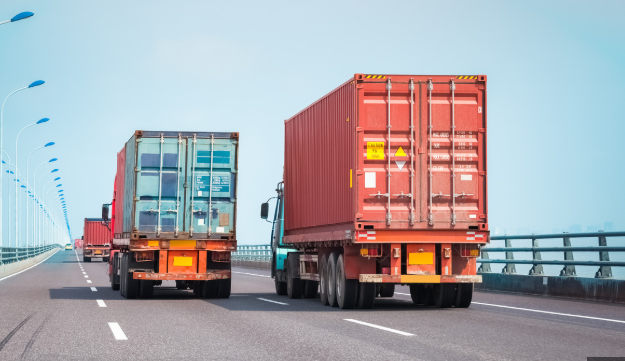
A Quick Definition: What is Intermodal Transportation?
Intermodal transportation refers to the strategic movement of goods using two or more modes of transportation – such as rail, truck, ship, or air – without handling the actual freight when changing modes. The cargo typically travels in a standardized intermodal container, which remains sealed and intact throughout the entire journey, even as it transitions between carriers and transport types.
This logistics approach ensures seamless transitions, minimizes cargo handling, and dramatically reduces the risk of damage or loss. It also allows businesses to tap into the cost-efficiency of rail, the flexibility of trucking, the global reach of ocean freight, and even the speed of air transport – all within a single, well-orchestrated shipping strategy.
Think of intermodal transportation as a multimodal relay race: the container is the baton, passed between specialized players at different stages – but never opened, never slowed down, and always protected.
It’s important to note that while “multimodal” and “intermodal” are sometimes used interchangeably, there’s a key difference: in intermodal shipping, the container stays the same throughout the journey, whereas multimodal logistics may involve cargo being unloaded and reloaded between modes.
In today’s fast-moving supply chain environment, intermodal transportation is gaining traction for good reason. It strikes a balance between speed, cost, environmental responsibility, and flexibility – especially for long-haul or cross-border freight.
How Does Intermodal Shipping Work?
To understand how intermodal transportation works, let’s break down the journey from origin to destination.
It all begins with cargo being loaded into a standardized intermodal container – usually a 20-ft, 40-ft, or 53-ft unit. Once sealed, this container becomes the core unit that will travel across multiple forms of transportation without the contents being handled directly again until final delivery.
From there, the freight could follow a path like this:
- First-Mile Trucking: A local drayage truck picks up the loaded container from the shipper’s facility and delivers it to a nearby rail terminal or port.
- Rail Segment: The container is loaded onto an intermodal rail car – often a double-stack railcar – for the long-haul portion of the journey. Rail is often used for domestic transport across long distances due to its cost-effectiveness and fuel efficiency.
- Port Transfer or Air Segment: If international shipping is involved, the container might be transferred to a container ship at an ocean port or flown via cargo aircraft, depending on timing and budget.
- Last-Mile Trucking: Once the container arrives at its final rail yard, port, or airport, it’s again moved by truck to the consignee’s location.
Throughout this process, intermodal providers – which could include railroads, ocean carriers, and drayage companies – coordinate to keep the shipment moving with minimal disruption. Digital tracking tools and freight visibility platforms make it easier than ever to monitor the container’s progress in real time.
This modular, flexible shipping model makes intermodal transportation ideal for domestic long-haul freight, cross-border shipments between the U.S. and Canada or Mexico, and even global supply chains where cargo must travel by sea or air.
For shippers, the benefits are clear: lower fuel costs, improved environmental performance, fewer damaged goods, and more scalable solutions to meet changing demand. And because the cargo stays sealed in its container, there’s less handling, fewer handoffs, and a significantly reduced chance of claims.
The Intermodal and Multimodal transportation differences
Now, it’s important to understand that even though they might look similar, intermodal and multimodal transport differ in some ways.
The key difference is that with the intermodal shipping process, the cargo is placed in a unique sealed container, which will be the one that will be transferred onto the different modes of transport used. Shippers must also negotiate every leg of the shipping journey with several carriers.
On the opposite, with multimodal transportation, the cargo could be unloaded and reloaded at every step of the journey, increasing risks of damage and breakage, as well as potential human labour on site and inventory costs if it can’t leave the facility right away. Also, with multimodal, the shipper sign here one and only contract with one carrier. This is the same carrier that will take care of the full shipment from A to Z.
Read more about the differences between intermodal and multimodal transportation in our related blog post.
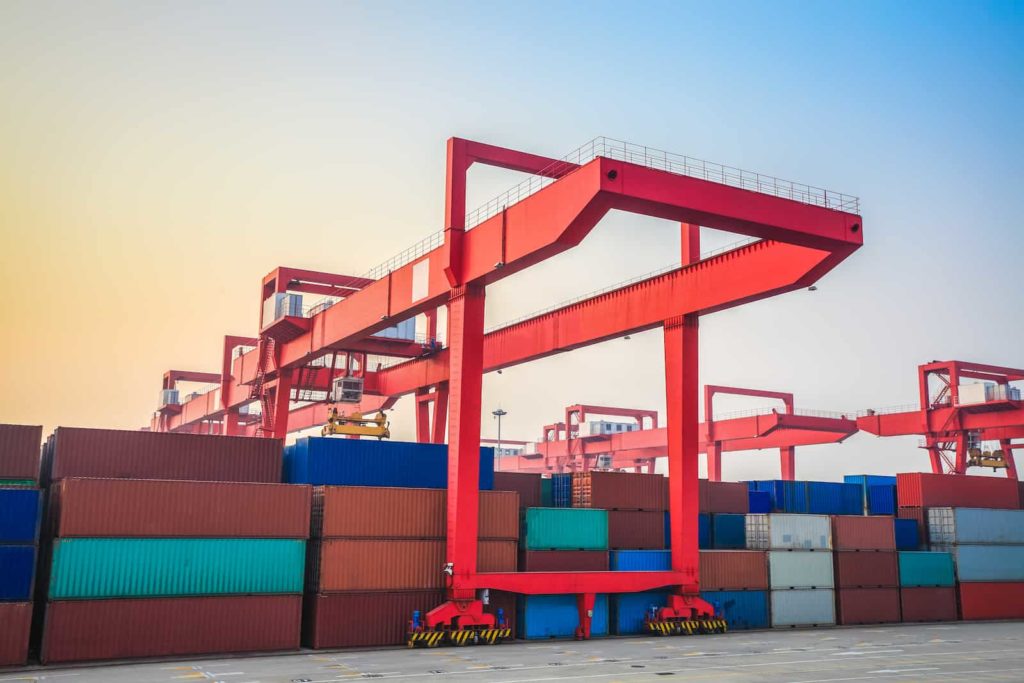
Understanding Intermodal Transportation
The importance of trucks in the intermodal service
Intermodal trucks are what most people think of when they hear the term “intermodal” transit.
Trucking companies handle around 71% percent of all intermodal transportation in the United States and in Canada; the trucking industry generates almost 39.55 billion Canadian dollars from almost 63.7 million shipments.
But while trucks make up a large percentage of total intermodal transportation activity – they don’t do it alone.
Other major transportation modes in the intermodal shipping process
These vehicles can easily pick up and drop off containers that have been transported by plane, ship, or rail intermodal, making them “combination carriers” or “intermodal shippers” because they’re capable of carrying multiple types of freight on each trip.
This means a truck can drive away from a train after it’s been loaded and then, before completing its journey, back up onto another vehicle for the trip until its final destination.
A closer focus on the Rail Intermodal Transportation
The rail service is actually a great way to move large or heavy freight for a domestic long-haul portion.
Why? Because rail intermodal transportation is one of the most reliable and safest forms of freight transportation. Without dealing with truck drivers’ breaks, hazards, or congestion on highways, trains ensure that the container arrives on time.
It also allows reducing freight costs when it comes to long-distance shipments. With larger quantities moved at once and less fuel consumed than over-the-road intermodal transportation. If you want to reduce transportation costs, rail is the way to go!
The When and Why of Intermodal Shipments
The reasons why and when a company should consider intermodal transportation are many, including:
- time savings due to reduced transit times through the use of multiple modes of intermodal freight transportation
- reduced carbon dioxide emissions and other pollutants due to the use of more than one intermodal shipping mode
- lower costs because rail cars can cut out road transport completely or reduce it dramatically
- delays and backlogs in the supply chain with truckload carriers and logistics companies
- Increased transportation costs as a result of customer demand and current world events
When considering what modes of intermodal transport will be used, companies need to consider their route carefully.
For example: if the cargo travels through an urban environment with heavy congestion on major highways, then using intermodal shipments that travel by rail car might make sense as opposed to long-haul trucking.
The key thing here is whether your shipment can avoid going onto roads at all, as this could result in time savings and environmental benefits for your business.
Always ask about transit times between origin and final delivery points to ensure you’re getting what you pay for from an intermodal provider.
Is it Time to Jump Into an Intermodal Freight Shipping Strategy?
Before you can answer if intermodal transportation is right for your business, let’s start with what it isn’t.
Intermodal transportation isn’t suitable for all businesses.
Companies that move dangerous products or environmental hazards may be at a higher risk by using several intermodal shipping modes.
Rail intermodal service may be inefficient and less durable than a full truckload freight transfer schedule for businesses that need rapid shipments or regular deliveries.
Of course, while every sector has its drawbacks, intermodal freight moving included, none are without their advantages as well.
Businesses that move an abundant quantity of low-value goods with longer transit times may also benefit from intermodal shipping.
As would businesses that move large value items at more regular intervals who value safety and security.
Intermodal transport integrates more efficiently by packaging cargo in standardized intermodal containers across multiple modes of transportation without being opened or manually handled from the point of origin until the final destination.
Because each leg connects seamlessly but still requires equipment specific to different types of cargo, there are many advantages of intermodal shipping.
For example, suppose your business moves a high volume of any kind of goods, including retail items, construction supplies, and other heavy cargo, across the country. In that case, a domestic intermodal shipping strategy can cut costs on some routes through improved fuel efficiency.
And unsurprisingly, the cost is, without a doubt, one of the reasons why the intermodal movement is so popular.
10 Things to Ask Yourself if Intermodal Shipping Is Right for You?
Here are some questions to ask yourself when determining if intermodal shipping is the best option for you and your business:
- Does your company currently transport goods over 300 km (186 miles) in distance?
- What types of products or raw materials do you need to transport? Are they restricted items?
- What is the total weight of your average shipment?
- Do you transport high-value freight? Is security a concern for you?
- Where is the shipment point of origin? Final delivery? Are they near or close to rail terminals or an intermodal ramp?
- Can your products be packaged and shipped safely in an intermodal container?
- The railway system has its limitations; how important is flexibility in scheduling to you?
- What type of intermodal containers might you require?
- Is scalability a priority for you and your business?
- Is sustainability a concern for your business? Does your company value reducing its carbon footprint and environmental impact?
Once you’ve answered the questions and determined that intermodal transport might be the right move, it’s time to consult with a full load intermodal rail consultant.
A qualified rail expert can help you choose the right intermodal shipping route and advise what type of equipment will be best for your cargo.
Now that you’re equipped with a bit of information on what intermodal rail shipping entails, are you ready to consider the benefits of moving your goods by train?
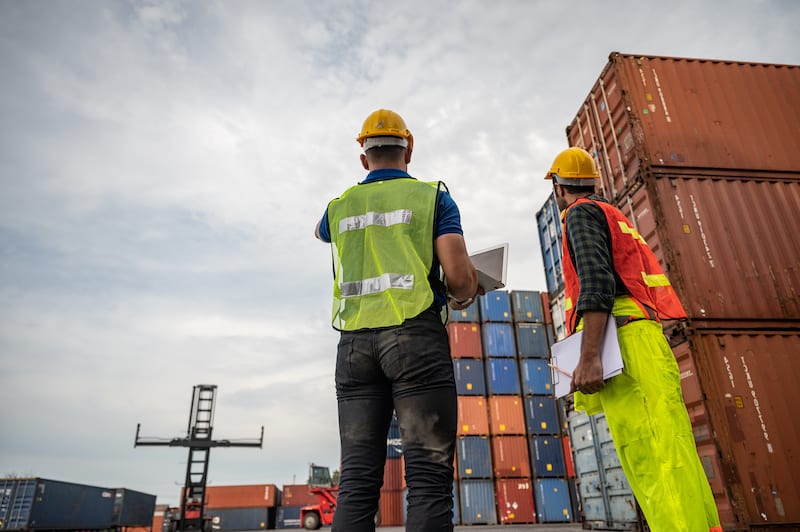
Getting Ready for Intermodal Shipping and Working With Intermodal Providers
When shipping intermodal, what type of equipment you need is dependent on what your company will be transporting.
Competitive pricing, increased fuel efficiency, and improved security are just a few reasons why intermodal shipping might be the right move for your business.
Working with an experienced rail consultant can help guide what types of intermodal containers to use and what routes would be best for your cargo.
They can also help you determine what types of equipment might be required and assist with the logistics involved in setting up a domestic intermodal shipping schedule.
When getting ready to move goods by rail, it’s important to familiarize yourself with what is or is not allowed on board as well as when your cargo needs to be on board.
Here are some items that might not be allowed in an intermodal container: hazardous materials such as explosives, flammables, and corrosives; cars or trucks; live animals; perishables like food and other high-value cargo where time is of the essence.
A full load railway professional can also advise what days of the week are best to transport what types of goods.
When looking to partner with an intermodal provider, consider how long the business has been operating, what average amount of savings they can offer, and what supply chain routes they specialize in.
Whenever it comes time for your business or company to start shipping goods by rail, some considerations must be made before choosing the best route.
Whether you’re looking for cost savings and improved fuel efficiency on certain routes or if security and safety are a priority issue, an experienced full-load intermodal rail consultant can help determine if this is the right strategy for you.
Conclusion
As we’ve explored, intermodal transportation isn’t just a trend – it’s a transformational logistics strategy that’s here to stay. For companies navigating economic uncertainty, rising fuel prices, and supply chain bottlenecks, intermodal offers a path toward agility, savings, and sustainability. It’s no longer enough to stick to a single-mode shipping model when the marketplace demands smarter, more adaptive logistics solutions.
By leveraging intermodal transportation, businesses reduce dependence on any one carrier or route. This diversification adds flexibility, especially when trucking capacity is tight or fuel costs spike. It also allows businesses to create backup strategies that mitigate disruptions, which is increasingly critical in today’s volatile environment.
Another often-overlooked benefit of intermodal transportation is better risk management. When freight is kept in the same container throughout its journey, there’s less opportunity for theft or damage. This closed-loop handling system reduces claims and helps maintain a solid reputation with customers expecting safe, on-time deliveries.
Looking ahead, the role of technology will only enhance the value of intermodal transportation. Expect even more integrated tracking platforms, AI-powered routing systems, and predictive analytics to help shippers make informed decisions in real time. As the industry modernizes, companies who build intermodal capabilities into their logistics strategy now will hold a long-term competitive edge.
In closing, intermodal transportation is no longer a niche approach – it’s a proven powerhouse of shipping performance. Whether your goals are financial, environmental, or operational, choosing intermodal will help you build a logistics foundation that scales with your growth. Embrace the shift, optimize your shipping, and prepare for a stronger, more efficient supply chain future.
Are you looking to make the jump into rail shipping in Canada? Head over to our blog for more information on how to get started with rail, or dive right in and request a rail quote here.
FAQ
- What is intermodal transportation?
Intermodal transportation is the use of two or more modes of transport – like rail, truck, and ship – to move cargo in a single container without handling the freight when changing modes. - How does intermodal transportation reduce costs?
It allows businesses to leverage rail for long hauls (which is cheaper per mile) and trucks for final delivery, minimizing fuel and labor costs. - Is intermodal transportation environmentally friendly?
Yes. Rail emits less CO₂ per ton-mile compared to trucks, making intermodal a greener solution. - What types of goods are best for intermodal transportation?
Non-perishable consumer goods, electronics, machinery, retail products, and packaged goods are ideal for intermodal shipping. - Can small businesses use intermodal transportation?
Yes. With the help of 3PLs and freight forwarders, small businesses can tap into intermodal benefits without managing full container loads themselves. - What are the risks of intermodal transportation?
Risks include delays at transfer points, misrouted containers, or issues with documentation, but these can be minimized with good planning and technology. - Do I need special containers for intermodal transportation?
Standard ISO containers are used for intermodal shipping and must meet certain structural and safety standards. - How do I track intermodal shipments?
Most intermodal carriers offer digital tracking with real-time updates on container location and estimated delivery times. - Is intermodal transportation available across Canada and the U.S.?
Yes. Major railroads like CN, CP, and BNSF offer extensive intermodal networks throughout North America. - What is the difference between intermodal and multimodal transportation?
In intermodal transportation, each leg is handled by a different carrier under separate contracts. In multimodal, one carrier manages the full journey under a single contract.
How We Can Help
For businesses looking to optimize their freight shipping with reliable, efficient, and cost-effective solutions, RailGateway.ca is your trusted partner in intermodal logistics. Whether you’re new to freight trains or want to enhance your existing supply chain, our team of intermodal experts is ready to guide you every step of the way.
Contact RailGateway.ca today for a free quote or to speak directly with one of our experienced intermodal specialists. Let us help you unlock smarter, smoother shipping solutions tailored to your unique needs.
Visit RailGateway.ca or call us to get started on transforming your freight shipping strategy in 2025 and beyond.

